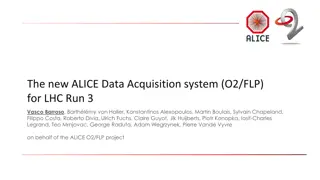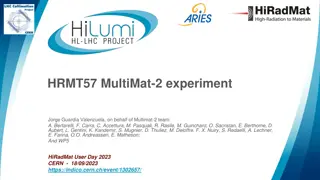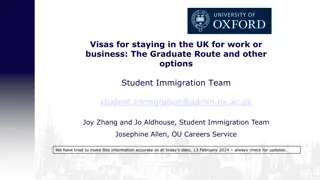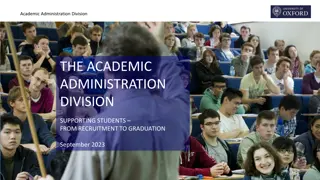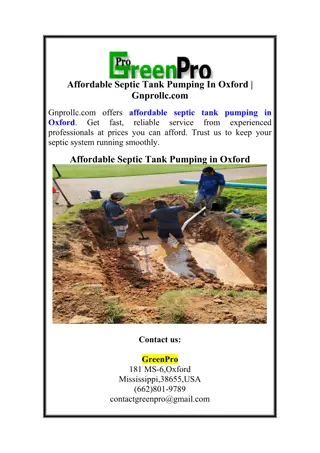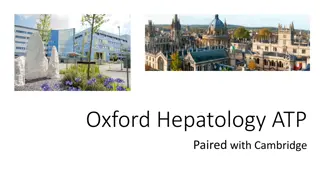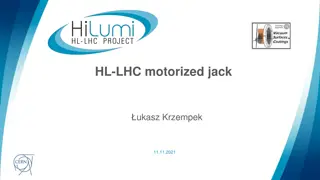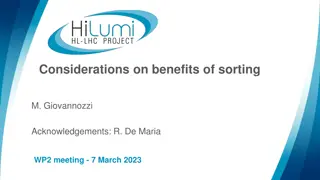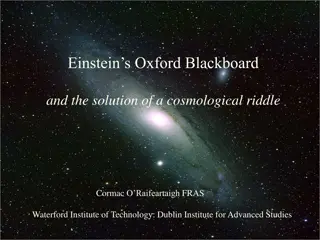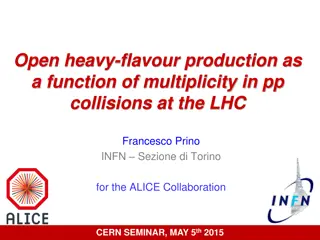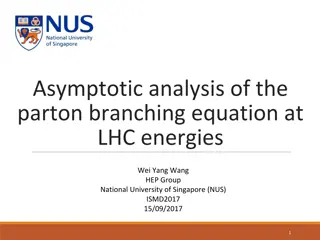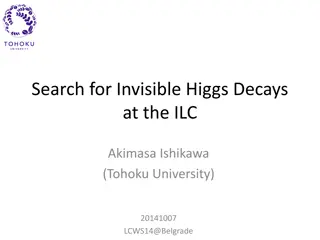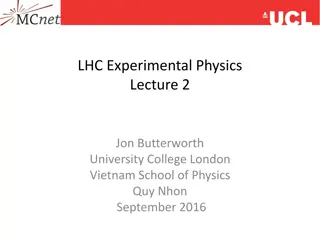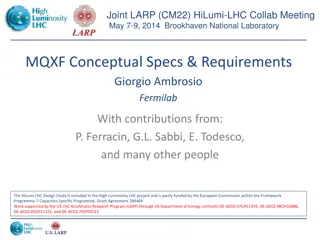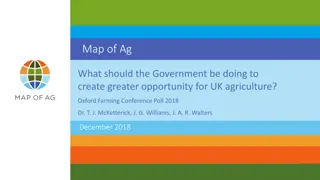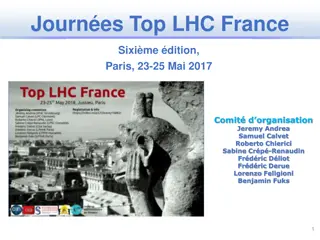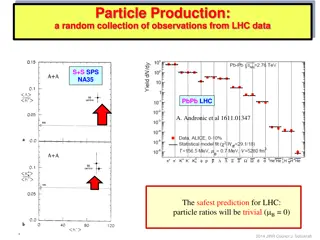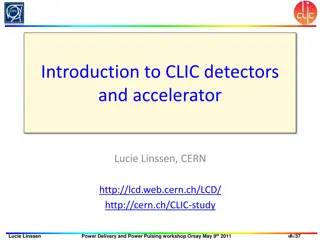
Extending CERN Computing to Volunteers LHC@home: Overview and Challenges
Explore how CERN is leveraging volunteer computing through LHC@home to enhance research on particle physics. Learn about the motivations, infrastructure, and history behind this collaborative effort. Discover the benefits and opportunities for community engagement in scientific endeavors.
Download Presentation

Please find below an Image/Link to download the presentation.
The content on the website is provided AS IS for your information and personal use only. It may not be sold, licensed, or shared on other websites without obtaining consent from the author. If you encounter any issues during the download, it is possible that the publisher has removed the file from their server.
You are allowed to download the files provided on this website for personal or commercial use, subject to the condition that they are used lawfully. All files are the property of their respective owners.
The content on the website is provided AS IS for your information and personal use only. It may not be sold, licensed, or shared on other websites without obtaining consent from the author.
E N D
Presentation Transcript
Extending CERN computing to volunteers LHC@home consolidation and outlook David Cameron (University of Oslo/ATLAS), Laurence Field, Nils H imyr (CERN-IT) Ivan Reid (Brunel University London/CMS)
Outline Why volunteer computing? BOINC overview LHC@home Server infrastructure Challenges and outlook History and applications Consolidation 3
Why volunteer computing? The WLCG has limited resources Still need a lot more computing for simulations on smaller data sets Use additional free* resources 100K hosts achievable for large projects Support for virtualisation - CernVM Community engagement Community participation and support Fully committed to LHC data reconstruction and analysis Outreach channel *Attracting and interacting with volunteers has a cost 4
BOINC Berkeley Open Infrastructure for Network Computing Software platform for distributed computing using volunteered computer resources Client server architecture Free and open source Used for SETI@home Climateprediction.net Einstein@home LHC@home http://boinc.berkeley.edu LHC@home consolidation and outlook 5
BOINC and Virtualisation BOINC distributes VMs to client machines along with a wrapper application The BOINC client installation for Windows now includes Virtual Box LHC@home consolidation and outlook 6
Some history Started with in 2004 for the 50thanniversary of CERN. Running the Sixtrack application for beam simulations of the stability of proton orbits in the LHC accelerator T est4Theory was added as a new BOINC project in 2011, it pioneered the use of virtualisation to run physics simulations on a virtual machine (CernVM) on volunteer desktops Joined byATLAS and other LHC experiments from 2014, also using CernVM and CernVMFS, a distributed http file system Effort to streamline and consolidate individual initiatives on separate BOINC projects to a common project and to integrate with regular simulation workflows as well as batch computing infrastructure 7
Project status LHC@home consolidated Asingle BOINC project with multiple applications Accelerator physics simulations (Sixtrack) as native BOINC app Simulations fromATLAS, CMS, LHCb and Theory running under CernVM and VirtualBox Job management backend integrated with HTCondor potentially wide range of (low-IO/high CPU) applications 8
Applications Sixtrack (beam simulations) Native BOINC application, Linux, MAC, Windows andAndroid Theory (MC events) running under CernVM in Virtual Box on Linux, MAC and Windows ATLAS (Event simulations), available as native BOINC application for Linux, or under CernVM in Virtual Box on Linux, MAC and Windows LHCb (Beauty physics simulations) running under CernVM in Virtual Box on Linux, MAC and Windows CMS (Event simulations) running under CernVM in Virtual Box on Linux, MAC and Windows (currently testing using a singularity container within the VM) 9
LHC@home server setup Server setup now scalable Load-balanced web front end Dedicated file upload/download servers Legacy assimilation and validator server for Sixtrack Remote submission from HTCondor Implemented for Sixtrack using Boinc-Condor GAHP Run Condor directly in VM for other applications ATLAS viaARC-CE and shared file buffer LHC@home consolidation and outlook 10
The Vacuum Model CernVM Experiment Framework Agent Inline with the cloud approach Common approaches Reduce costs Both development and operation Untrusted resource Validation DataBridge or BOINC Authentication VCCS (Volunteer CA) 11
Volunteer computing challenges Volunteer base not increasing More use of mobile devices BOINC community stable Important to evolve the software stack and keep engaging with the community Institute desktops and idle server machines have an unexploited potential Ref.ATLAS talk @ CHEP 2018 https://indico.cern.ch/event/587955/contributions/2937192/ Competition from Bitcoin mining a real issue 13
BOINC community contributions The BOINC software moved from Berkeley to Github in 2016 and now follows a community Open Source governance mode The LHC@home team at CERN has contributed to the new governance model and the BOINC workshop in Paris last year where an improved community model was bootstrapped New WebRTC BOINC client GUI (proof of concept) as alternative to native GUI Maintenance of RedHat/Fedora BOINC client, now at 7.10.22 Other contributed BOINC code updates have been bug fixes and improvements to the BOINC server components (e.g. for scheduling, HTCondor gateway and GDPR compliance) The future of BOINC depends on contributions from the community of BOINC projects! LHC@home consolidation and outlook 14
References http://cern.ch/lhcathome http://boinc.berkeley.edu Questions? LHC@home consolidation and outlook 15

